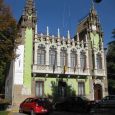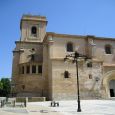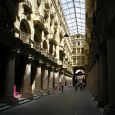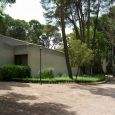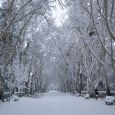Albacete
Advertisement
By bus
The city has 7 lines of buses operated by the company Urban SuBús NLJ. The fleet was completely renovated in 2007, replacing the old green buses other than a corporate color, red and white. Albacete capital currently has 28 vehicles, 9 of type Iveco Irisbus GX-127 and 19 type O-530 Mercedes Benz . Within the latter group there is a model "Labobús" that is, a vehicle with cutting-edge data storage and powered by solar panels and all the upgrades possible. The stop frequency time is 11 minutes on most lines daily.
By train
There are three lines show (EF1, EF2 and EF3), available from 7 to September 17, a period in the city center, serving from late afternoon until the wee hours of the morning only to transfers to the fairground. It is worth mentioning that are totally free, unlike ordinary lines, whose ticket costs 1 €, with the possibility of purchasing cards bonobos based on preferences and be able to make transfers within a time limit of 45 minutes between any of the lines, although it is necessary to hold the aforementioned bus pass card.
Albacete Provincial Museum
Albacete Provincial Museum still has the aura of the early nineteenth century period provincial museums, but is currently undergoing a process of reform and facelift, to suit the cultural needs of the XXI century. The first attempts museological archeology depart from Albacete Provincial Monuments Commission, formed in 1844, which in 1876 agreed to create a Museum of Fine Arts & Antiques will be located up to 1894 in the rooms on the second floor of the Civil Government.On June 22, 1927, during the dictatorship of Primo de Rivera, was inaugurated the Museum of the Provincial Commission of Monuments, located on the second floor of the County Council. For the first time are sorted and presented in a more or less scientific archaeological and artistic funds with which the museum had
Abelardo Sanchez Park
Abelardo Sanchez Park is the largest urban green space in the city Spanish of Albacete , with 101,695 meters square, and the second oldest, which makes "The Park" par excellence of the city.During the plenary session of the City Council of August 23 of 1910 it was decided to build a park south of the city, whose construction would begin on February 23 of next year . Construction work involved the planting of 12,000 trees and 400 pine trees of different species, with a total cost of 31,788.68 pesetas . The mayor at that time was Abelardo Sanchez Garcia. At first, received the name "Canalejas Park" in honor of Jose Canalejas , Spanish Prime Minister , assassinated by an anarchist in 1912 .
The Municipal Museum of Knives of Albacete
The Municipal Museum of Knives of Albacete, in the Plaza de la Catedral, located in the Casa de Hortelano, houses an extensive collection of traditional and recognized local cutlery, plus cutlery temporary exhibitions throughout the world. It is one of only three museums in Europe on the cutlery.
Cathedral of San Juan de Albacete
The Cathedral of San Juan Bautista of Albacete , in Spain , was begun in 1515 on a former Moorish temple, although it was not until 1959 when it concluded in its present, with its exterior style neo-Romanesque and Gothic .In the early sixteenth century, the old parish Moorish medieval period began to be demolished from the head to the feet, and instead began to lift the current factory in early Gothic with a large apse and two side central , then three naves of equal height and two tranches: one corresponding walls with pillars attached, a side chapels and big pillars that held ribbed vaults, all in the most stylish gothic final.
Passage Lodares
Existing residential and commercial galleries in the city of Albacete . Located between the Dye and Mayor streets, this building is an example of modernist architecture of the early twentieth century.
Designed in 1925 by Buenaventura Ferrando Castells , answers were given to models already in the Spain of Isabella II and evolved in the Restoration . Its roof is based on iron and glass. It has three floors of balconies overlooking the ground floor passage and supported by robust columns adorned with Renaissance and neo-baroque modernist historicism that divide the different shops. It is complemented by the characteristic iconography of these passages alluding to trade, industry, etc.
Information not available


